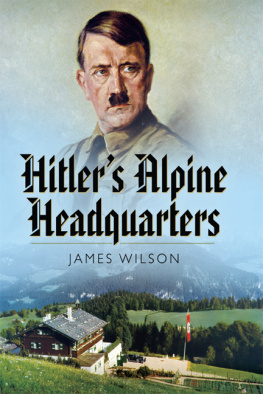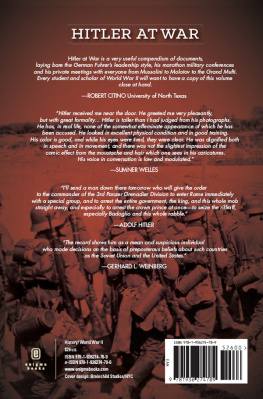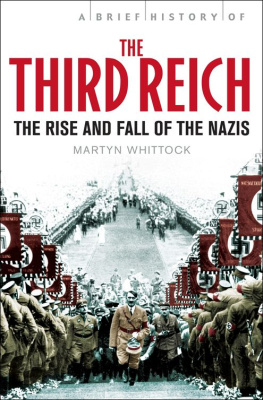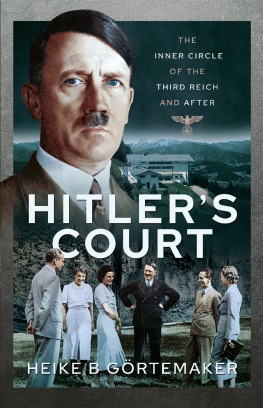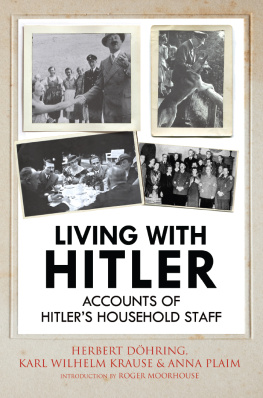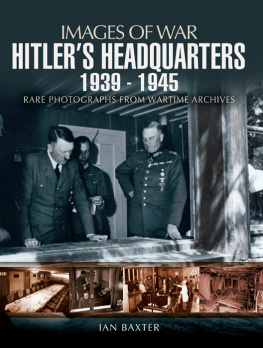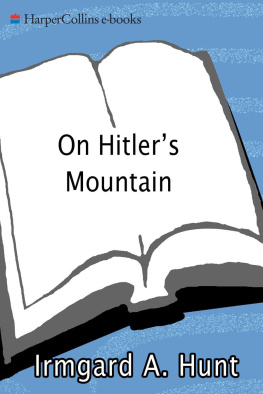
First published in Great Britain in 2005
New updated edition published in 2013 by
PEN & SWORD MILITARY
an imprint of
Pen & Sword Books Limited
47 Church Street
Barnsley
South Yorkshire
S70 2AS
Copyright James Wilson, 2013
ISBN: 978 1 78303 004 0
eISBN: 9781473831872
The right of James Wilson to be identified as Author
of this Work has been asserted by him in accordance
with the Copyright, Designs and Patents Act 1988.
A CIP catalogue record for this book
is available from the British Library
All rights reserved. No part of this book may be reproduced or transmitted in any form or by any means, electronic or mechanical including photocopying, recording or by any information storage and retrieval system, without permission from the Publisher in writing.
Typeset in Optima by Chic Graphics
Printed and bound in England by
CPI Group (UK) Ltd, Croydon, CR0 4YY
Pen & Sword Books Ltd incorporates the Imprints of
Pen & Sword Archaeology, Atlas, Aviation, Battleground, Discovery,
Family History, History, Maritime, Military, Naval, Politics, Railways,
Select, Social History, Transport, True Crime, and Claymore Press,
Frontline Books, Leo Cooper, Praetorian Press, Remember When,
Seaforth Publishing and Wharncliffe.
For a complete list of Pen & Sword titles please contact:
PEN & SWORD BOOKS LIMITED
47 Church Street, Barnsley, South Yorkshire, S70 2AS, England
email: enquiries@pen-and-sword.co.uk
website: www.pen-and-sword.co.uk
Contents
Foreword
S ince Hitlers Alpine Retreat was first published in 2005 I have enjoyed two seasons working as a tour guide in beautiful Berchtesgaden. Eagles Nest Historical Tours, owned by David and Christine Harper, has an enviable worldwide reputation as specialist in presenting historically intensive tours on the history of the region during the Third Reich. This small, independent, personable company really sets the standard on what for many, is a particularly sensitive subject. While all tours are delivered in English, the clientele is truly international. All levels of interest are catered for; from the four-hour history intensive afternoon group tour, to the private eight-hour all day tour. I was delighted to spend two summers in Berchtesgaden, 2009 and 2010, when I worked with David and Christine.
These two periods, while extremely enjoyable, enabled me to expand my knowledge on the history of the area under the Nazis. Spending so much time in the area also allowed access to people and locations that would otherwise be impossible. The acquisition of additional photographic material, my experiences in Berchtesgaden, and the kind and encouraging comments expressed by readers of Hitlers Alpine Retreat ; these are the factors that have compelled me to write Hitlers Alpine Headquarters .
Authors Comment
A t the risk of leaving myself open to criticism, I should point out that from the outset it has been my intention not to express any political opinions in this work. Furthermore, I have deliberately attempted neither to promote nor denounce any individual or group; rather it has been my intention to present the facts and to allow the reader to draw their own conclusions.
This intention might best be explained by way of the following scenario. Imagine yourself a member of the working class living in 1920s Germany. While the defeat of 1918 still haunts the nation, the resulting shattered economy, uncontrolled rampant inflation and widespread unemployment are even harder to bear. The end of 1923 sees the beginning of sustained economic growth. This growth continues until halted by the catastrophic effects of the World Depression in 1930. Germany, perhaps more than any other country, is hardest hit.
Let us move forward, it is 1933 and the Nazis are in power, now try to imagine how you might react to a relentless, and as yet, never previously encountered sophisticated propaganda campaign. While there is no escaping the powerful symbolism of the new regime, there are frequent broadcasts applauding the achievements of the new political and social order. Where the government of the Weimar Republic failed; the Nazi Partys Four Year Plan, introduced in 1933 to tackle unemployment and economic problems is now bearing fruit and changing peoples lives.
It is now 1935 and the restrictions of the Versailles Treaty are being openly flouted, not least by the re-emergence of the military, and all it seems without any foreign reaction. Finally, there is a definite feeling of renewed national pride as the new government declares itself responsible for all the improvements in everyday life, with promises of better to come. Exciting times by any stretch of the imagination, dont you think! With that in mind, notwithstanding the terrible hidden agenda as yet to unfold, can we be sure, given the same set of circumstances that we would have reacted any differently. Who are we to judge?
For the majority of people living in Germany in the early 1930s it has been said that there were only two choices; Communism, or National Socialism. In the end National Socialism would dominate. A commonly held view of National Socialism at the time was that it was; Something good with some bad side effects, or something bad with some good side effects.
Finally, and in order to better understand the captions that accompany the following images, it should be explained that all text appearing in bold type , whether this appears as just part of the caption, or indeed the entire caption, is a translation of the original German text taken from that particular postcard. The reader should also understand that each caption has been composed to compliment and enhance the image to which it relates; this is a deliberate effort on my part in an attempt to replicate how these images would have been presented to the German public and the rest of the world at the time of their original release.
Introduction
T he Alpine cottage that would eventually be known as Haus Wachenfeld was first occupied in 1861 by Michael and Elisabeth Renoth. The property changed hands twice between 1891 and 1922. On 8 March 1922 the house was bought by Frau Margarete Winter-Wachenfeld, a merchants widow from Buxtehude near Hamburg. Frau Winters maiden name had been Wachenfeld; thus the property was named Haus Wachenfeld. Constructed in traditional Alpine style, this humble cottage would later achieve notoriety as the country home of none other, than Adolf Hitler. However, in order to fully appreciate the importance of Haus Wachenfeld (later known as the Berghof) and the role this beautiful mountainous region would play in the life of Adolf Hitler, we must go back to that point in time when Hitler first came to the area. Hitler visited Berchtesgaden and the Obersalzberg for the first time in April 1923. He came to see his old friend and mentor Dietrich Eckart. Eckart, as editor of Auf gut Deutsch! (In Good German!), an anti-Semitic periodical, was wanted for questioning regarding the anti-Semitic nature of his writing. Eckart had selected the Obersalzberg as a hiding-place in his efforts to avoid arrest. At that time Eckart was using the alias Dr Hoffmann, in an attempt to keep his whereabouts secret from the authorities. Hitler, for his part, and in an effort not to lead the police to Eckart, came to the area using the name Herr Wolf.
At the end of his visit, Hitler was, in his own words, completely captivated by the region. Back in Munich and later that year, Hitler and the other Nazi leaders found themselves charged with high treason as a result of their unsuccessful attempt to seize power, (known as the Munich Beer-Hall Putsch (Revolt)) on 9 November 1923. The authorities, having successfully suppressed the revolt arrested Hitler two days later on 11 November. Hitler was discovered at the family home of his friend, Ernst Putzi Hanfstaengl at Uffing near the Staffelsee, some seventy kilometres (forty-five miles) southeast of the Bavarian capital where he was found recovering from injuries sustained during the uprising. The would-be Fhrer (Leader) was held in Landsberg Prison until trials began the following year.

